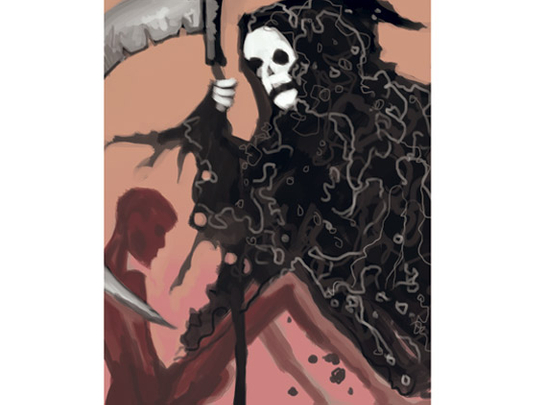
In 1831, a visitor was anxiously awaited in Sunderland, whose residents, like all Britons, were used to falling sick in the summer with stomach aches and diarrhoea.
They called it ‘summer cholera' and it was no big deal: a cold in winter, cholera in summer. But this was different. This was Asiatic or blue cholera, which had already ravaged Hamburg, and was bound for Sunderland by ship.
The town was terrified, and a quarantine was set up in the port. But cholera came anyway, and as there was no land quarantine, easily spread. Twelve-year-old Isabella Hazard was one of the first victims.
She was healthy and alive at midnight and dead by the next afternoon, and the town was beside itself with fear and panic. "Threats to burn the doctors," local historian Stuart Miller noted, "were not to be interpreted as casual conversation." Cholera riots were common.
That epidemic, the first of several, killed about 6,000 people nationwide. But for decades, the medical establishment believed cholera travelled by ‘bad air', and doctors slept with their doors open.
Only the work of medical hero Dr John Snow proved that cholera travelled in excrement, and usually in water (the Thames served as both sewer and drinking fountain then).
Good sanitation the containment of a potentially toxic waste with flush toilets, sewers and soap did for vibrio cholerae in Britain, and by the end of the 19th century, the disease had been beaten. Yet from the attention given disproportionately to cholera, you'd think Britons were decades, not centuries, away from its power. After Hurricane Katrina, when people drinking and wading through sewage-laden water risked any number of the 50 diseases that like to travel in excrement, the media talked only of cholera.
Haiti's current cholera epidemic has been given a similar glaring limelight, featuring prominently on nightly news broadcasts. Of course cholera is a terrifying disease. It spreads and kills violently fast. With cholera you can be jogging before breakfast and dead before lunch, as its bacteria expel liquids from your body, turning you skeletal and blue. It is dreadful that 300 Haitians have died from it. But diarrhoea the boring, unremarkable disease kills 300 children every hour, and where is the uproar about that? Diarrhoea, not cholera, is the second biggest killer of children on the planet. Four jumbo jets' worth of children die of the runs every four hours. I can't remember ever seeing that on the 10 o'clock news.
Saleable images
Is it because cholera is photogenic? It kills adults, for a start, and often visibly. Dead bodies on the street provide more saleable images than four-year-old Maria, who just died in a shack in Bangladesh, even though Maria's two older brothers died last year of diarrhoea too. If I'm deeply cynical, I might point out that there is a cholera vaccine that is worth money. In the diarrhoea world, although Bill Gates and his foundation are promoting a rotavirus vaccine for diarrhoea, rotavirus is only one cause among many. Solving diarrhoea is both complicated and simple: it requires installing good sanitation that separates from human excrement, something that the world seems incapable of doing.
The UN's Millennium Development Goals include a target to provide sanitation to the world's 2.6 million toiletless by 2015. At current rates, one might reach the target a few centuries from now. Sewage is the largest marine pollutant on the planet, and damages the environment in countless countries. But you'd never guess that from funding priorities. In Madagascar, UNAIDS in 2007 found too few Aids death to estimate, but HIV/Aids receives five times more funding than sanitation, though diarrhoea kills 14,000 Madagascan children every year.
Nor can one in the flushed and plumbed world hide our heads in our nice clean bathrooms. Those wonderful sewer systems installed in the 19th century are struggling to cope with a lack of maintenance and funding, and populations far greater than they were designed for.
Raw sewage is regularly discharged into rivers and lakes at least once a week and sewer systems can be overwhelmed by a couple of millimetres of rainfall. In the United States, it's estimated that 20 million people become ill every year from drinking faeces-contaminated water. That might explain the obsession with cholera: we are only one sewer away from it, even now. But it doesn't explain the deadly and unforgivable neglect of diarrhoea.
— Rose George's new book, The Big Necessity: The Unmentionable World of Human Waste and Why It Matters, is out now.









